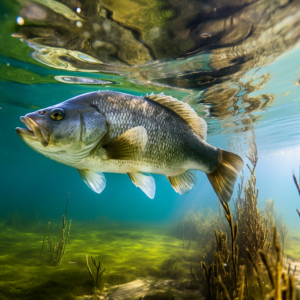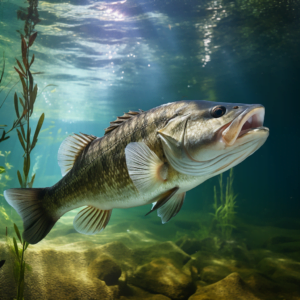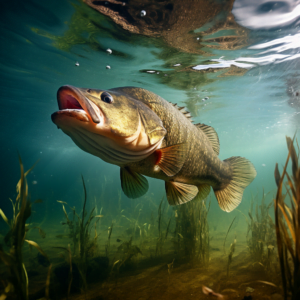Have you ever wondered if sea bass and basa are the same fish? Well, let’s dive into the world of fish and explore the differences between these two popular types. Sea bass and basa may both be fish, but their characteristics and origins set them apart. In this article, we will delve deeper into the distinctions, providing you with a better understanding of sea bass and basa.
Sea bass, also known as European bass, is a popular fish in Mediterranean cuisine. It has a distinct flavor and is commonly used in dishes such as grilled sea bass or pan-seared fillets. The sea bass has a firm texture and a rich taste that pairs well with various seasonings and sauces. On the other hand, basa, also known as Vietnamese catfish, is a freshwater fish native to the Mekong Delta. It is often described as having a milder taste compared to sea bass.
While sea bass is more commonly found in European and Mediterranean markets, basa can be found in Asian cuisines. The popularity of basa has grown globally in recent years due to its affordability and versatility in cooking. In the following sections, we will explore the differences in appearance, taste, and nutritional value between sea bass and basa, providing you with a comprehensive understanding of these two distinct fish.
So, if you’re curious to know more about the differences between sea bass and basa, keep reading! By the end of this article, you’ll be able to confidently distinguish between these two delicious fish and choose the one that best suits your culinary preferences.
Fish
When it comes to seafood, fish is a popular choice for many people around the world. Fish is not only delicious, but it is also a great source of nutrition. There are numerous types of fish that you can choose from, each with its own unique characteristics and flavors. In this article, we will explore the different types of fish, discuss the nutritional value of fish, and delve into the specifics of sea bass and basa.
Types of Fish
Fish can be categorized into three main groups: freshwater fish, saltwater fish, and canned fish. Each group represents a variety of different species, all with their own distinct features.
Freshwater Fish
Freshwater fish are found in lakes, rivers, and other freshwater bodies. They have adapted to survive in environments with low salt content. Some popular types of freshwater fish include trout, salmon, and catfish.
Trout is a freshwater fish that is beloved for its delicate flavor and tender flesh. It is often prepared by grilling or baking and pairs well with herbs and citrus flavors. Salmon is another popular choice, known for its rich taste and high omega-3 fatty acid content. Catfish, on the other hand, has a mild flavor and is often breaded and fried for a crispy texture.
Saltwater Fish
Saltwater fish are found in the oceans and other saltwater bodies. They have adapted to thrive in high-saline environments. Some common saltwater fish include tuna, cod, and snapper.
Tuna is a popular choice for its meaty texture and robust flavor. It can be enjoyed raw in sushi or cooked on the grill. Cod, on the other hand, has a mild taste and flaky texture that makes it perfect for dishes like fish and chips. Snapper is a white-fleshed fish that has a delicate flavor. It is often cooked whole or filleted and grilled.
Canned Fish
Canned fish is a convenient option for those who want to enjoy fish without the hassle of cooking and preparing it. Canned fish is typically cooked and preserved in oil or water. Some common types of canned fish include sardines, anchovies, and tuna.
Sardines are small fish that are packed with flavor and nutrients. They can be enjoyed on their own or added to salads, pasta dishes, or sandwiches. Anchovies are known for their intense flavor and are often used as a topping or ingredient in Mediterranean dishes. Tuna is a versatile canned fish that can be used in sandwiches, salads, and casseroles.
Nutritional Value of Fish
Fish is not only tasty, but it is also packed with essential nutrients that are beneficial for your health. Here are some of the key nutritional benefits of consuming fish.
Protein Content
Fish is a great source of high-quality protein, which is essential for the growth and repair of tissues in the body. It is especially important for building and maintaining muscle mass.
Omega-3 Fatty Acids
Fish, particularly fatty fish like salmon and tuna, are rich in omega-3 fatty acids. These healthy fats have numerous benefits for the body, including reducing inflammation, improving heart health, and supporting brain function.
Vitamins and Minerals
Fish is also a good source of vitamins and minerals, including vitamin D, vitamin B12, iodine, and selenium. These nutrients play important roles in maintaining overall health and supporting various bodily functions.
Sea Bass
Sea bass is a fish species that is often confused with basa due to their similar names. However, they are actually two different types of fish with distinct characteristics and flavors.
Physical Characteristics
Sea bass is a white-fleshed fish that has a firm and meaty texture. It has a silver-gray color on its skin and a tapered body shape. Sea bass typically grows to be around 20-30 inches long and can weigh up to 15 pounds. It has sharp spines on its dorsal fin and small scales on its body.
Flavor and Texture
Sea bass has a mild and delicate flavor, with a slightly sweet undertone. Its flesh is firm and moist, making it suitable for a variety of cooking methods. Sea bass is often described as having a buttery texture and is known for its ability to hold its shape when cooked.
Culinary Uses
Sea bass is a versatile fish that can be prepared in numerous ways. It can be filleted and grilled, baked whole, or cooked in soups and stews. Sea bass pairs well with a variety of flavors, including citrus, herbs, and spices. Its mild taste makes it a favorite among seafood enthusiasts.
Basa
Basa, also known as Vietnamese catfish, is a popular fish species that is often compared to sea bass. However, there are several differences between the two.
Physical Characteristics
Basa has a flat body shape with a light gray color and smooth skin. It can grow up to 4 feet long and has large eyes and a wide mouth. Basa has long dorsal and anal fins, which give it a distinctive appearance.
Flavor and Texture
Basa has a mild and slightly sweet flavor, similar to sea bass. However, its texture is different, with a softer and more delicate flesh. Basa is known for its ability to absorb flavors, making it a great choice for dishes with strong spices and seasonings.
Culinary Uses
Basa is often used in Asian cuisine, particularly in dishes like fish soup, stir-fries, and curries. Its mild flavor and soft texture make it suitable for a wide range of recipes. Basa can be easily marinated and grilled, or deep-fried for a crispy outer layer.
Conclusion
In conclusion, sea bass and basa are two different types of fish with distinct characteristics and flavors. Sea bass is a white-fleshed fish with a mild and buttery taste, while basa is a Vietnamese catfish with a softer and more delicate flesh. Both fish are delicious and offer unique culinary experiences. Whether you prefer sea bass or basa, incorporating fish into your diet can provide numerous health benefits. So, the next time you’re at the seafood counter, why not give sea bass or basa a try and discover the flavors that these fish have to offer?




